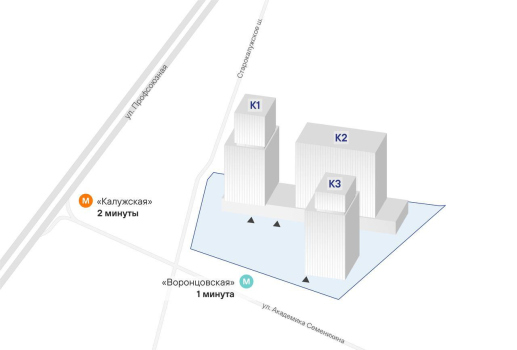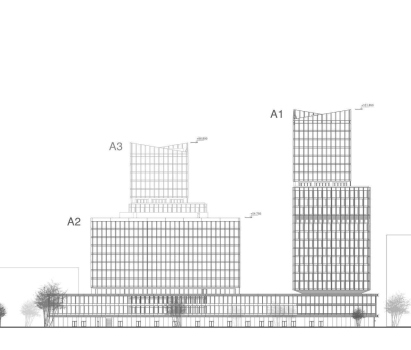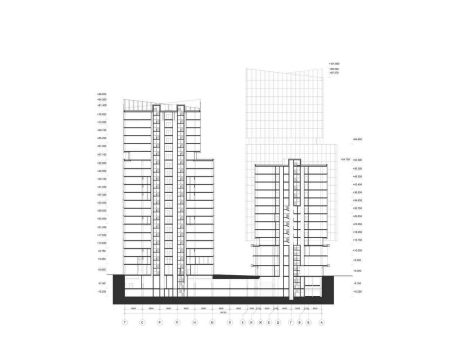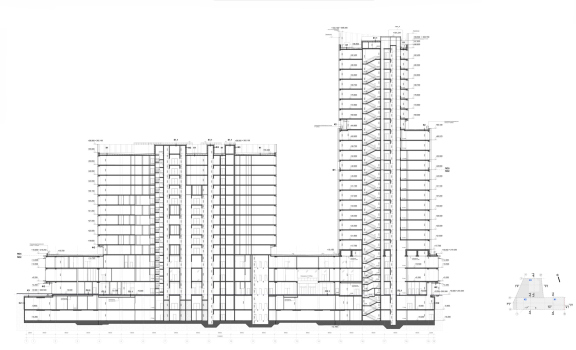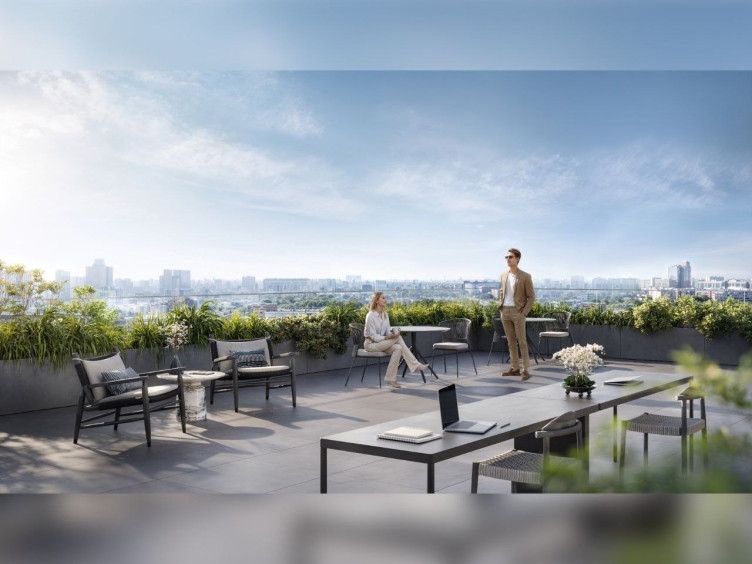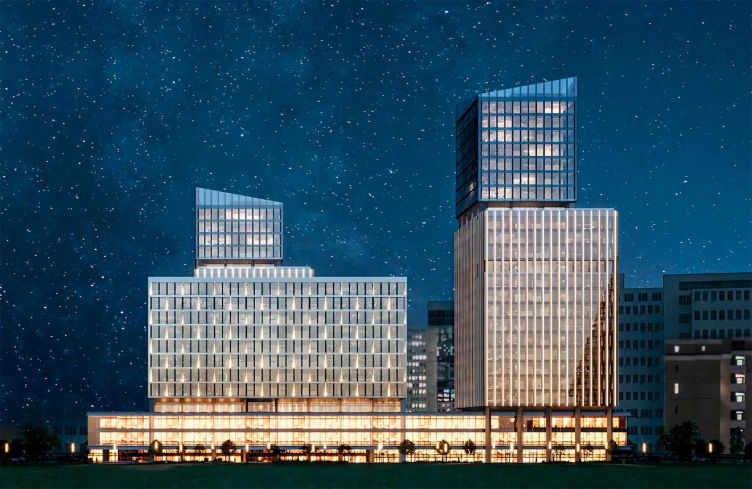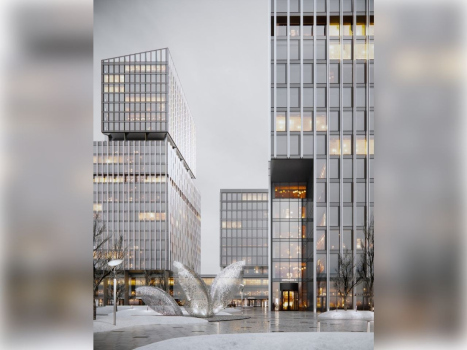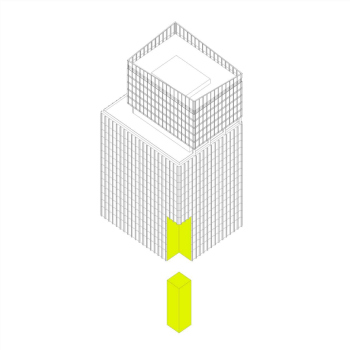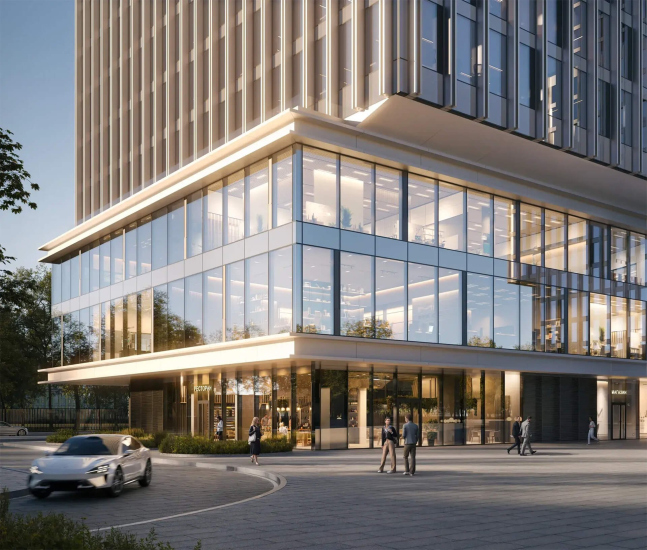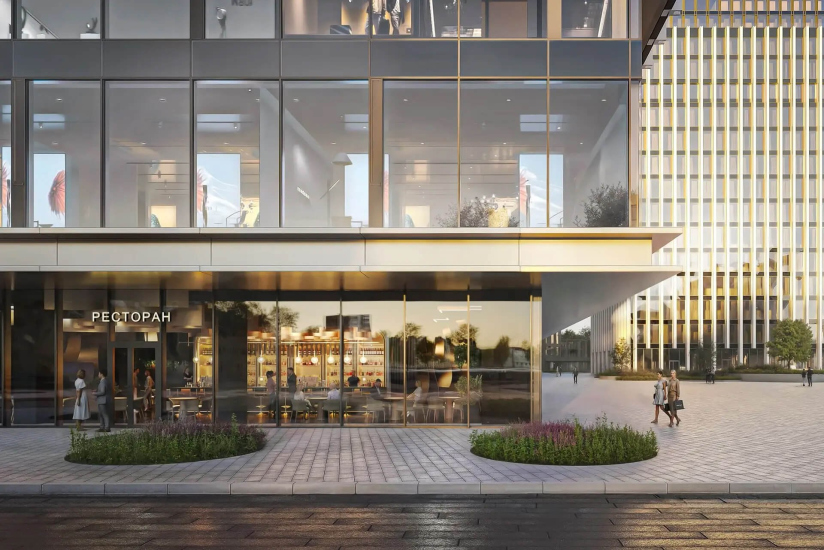The architectural character of this part of Moscow began taking shape in the Brezhnev era and continues to evolve today. Notable neighbors include the horizontally stretched Institute for Space Research (Profsoyuznaya 84, Building 12, 1968-1978, architect Yuri Platonov), the 22-story tower of the Central State Archive of Moscow (Profsoyuznaya 82, 2003–2006), and the Lotte Business Center (Profsoyuznaya 65, 2013, TPO Reserve). All of these buildings line one of the main arteries of the southwest – Profsoyuznaya Street. However, if you step back from this thoroughfare into the inner blocks, you will find yourself in a patchwork of irregular street grids, local industrial sites, shopping malls, and residential neighborhoods.
The area received new impetus for development with the launch of the BCL and the opening of Vorontsovskaya station. Close to the station, two large-scale residential complexes are now under construction: Architect (designed by Ingrad Project) and EVER (GAFA Architects) – together adding 300,000 square meters of housing.
When the architects at Kleinewelt began work on STONE Kaluzhskaya, they set themselves two tasks: first, to integrate the complex into the already eclectic context, and second, to anticipate its dialogue with architecture yet to come. Located right next to Vorontsovskaya metro station, the business center in a sense serves as the gateway to the district, aspiring to become the keystone of the entire area.
Structure
STONE Kaluzhskaya is a Class A office complex consisting of three towers, two of which rise from a shared podium. The total floor area is about 84,000 square meters, including 58,000 square meters of office space and 14,000 square meters of retail, cafés, and public zones.
The STONE Kaluzhskaya complex
Copyright: © Kleinewelt Architekten
The floor plans provide for both large open office spaces of up to 1,400 square meters and smaller modules ranging from 50 to 200 square meters. The ceiling heights reach 3.65 meters, while the double-height lobbies soar up to eight meters. Panoramic glazing ensures natural light and opens up sweeping views of the metropolitan city.
The complex is equipped with modern engineering systems and cutting-edge high-speed elevators. For motorists, there is a two-level underground parking garage for 330 cars, equipped with EV charging stations, as well as bicycle and scooter parking, car-sharing spaces, and taxi drop-off points. In front of the building, there will be a landscaped plaza with monumental art that will also serve as a public garden.
Design
The architectural company Kleinewelt and the developer STONE have long been familiar partners, having previously completed several office buildings together in Khodynka and Mnevniki. Work on STONE Kaluzhskaya progressed in a comfortable rhythm, with many iterations devoted to exploring volumetric and spatial solutions. The architects invested considerable effort into micro-level design, refining even the smallest details.
It was a careful, thoughtful process of shaping both the image and the inner content of the project, with the client actively involved. We met frequently, discussing different options. The goal was not only to create a comfortable, high-quality working environment inside the complex, but also to give it a distinctive, vibrant, and contemporary silhouette that would blend organically into the gradually evolving urban fabric of the district.
As a result, the business complex turned out distinctly abstract, without literal references, yet featuring a sophisticated asymmetrical spatial composition and varied articulation of volumes both vertically and horizontally.
The STONE Kaluzhskaya complex
Copyright: © Kleinewelt Architekten
The 23-story K1 tower and 13-story K2 tower stand on a three-story podium, while the 20-story K3 tower is freestanding. The upper sections of towers K1 and K3 feature cubic volumes with slanted rooflines. This solution helped avoid monotony and added dynamism to the overall composition. The “cutouts” dividing the towers into volumes also created opportunities for green terraces on the accessible rooftops.
The STONE Kaluzhskaya complex
Copyright: © Kleinewelt Architekten
The K2 building was conceived as the most “intimate” one of the three, housing the smallest office units starting from 46 square meters. It is designed as a parallelepiped stretched along Obrucheva Street. Directly across the street stands the equally elongated building of the Russian Academy of Sciences’ Space Research Institute. The two structures are intended to visually “rhyme” with each other.
The STONE Kaluzhskaya complex
Copyright: © Kleinewelt Architekten
The K1 and K2 towers connect to the podium in different ways: K2 is separated from it by a recessed strip of glazing, while K1 rests on a row of massive columns, giving the impression that the podium runs freely beneath it – at least visually.
The STONE Kaluzhskaya complex
Copyright: © Kleinewelt Architekten
Finally, the freestanding K3 tower features a striking detail: at the level of the seventh floor, a corner of the volume is “cut out,” creating a dramatic cantilever that hovers above the entrance. This element immediately catches the eye of people exiting the Vorontsovskaya metro station and serves as the composition’s main focal point.
In this project, the architects distilled the architectural code of the district – an area haphazardly built up with houses of varying heights and diverse geometric forms – into a concise and concentrated form.
Facades
The designers at Kleinewelt developed three types of facades, which on the one hand introduce variety into the project, and on the other ensure a clean, cohesive appearance without unnecessary complexity.
The first type is used on the main tower volumes: panoramic glazing complemented by U-shaped louvers. These louvers, made of powder-coated metal in a light gray, almost white tone, project 450 millimeters outward from the walls. As a result, the glass buildings do not dissolve into their surroundings but retain a crisp silhouette. Yet another interesting additional detail here is the blind ventilation panels, arranged in a staggered pattern.
At night, the louver lighting – an independent architectural task – highlights the geometry of the complex and lends the buildings sculptural expressiveness.
The STONE Kaluzhskaya complex
Copyright: © Kleinewelt Architekten
The second type is used on the facades of the upper cubes. Here too panoramic glazing is applied, yet combined with recessed ventilation panels arranged in a strict orthogonal order. The depth and articulation create an added play of light and shadow, enriching the perception of the surface. Despite its expressiveness, the system remains clean and free of excessive ornament.
The third type is the podium facades. These outer walls combine panoramic glazing with wide cornices. The glazing units are set in slender frames. The podium itself is permeable and transparent: through the central entrance, one can access the inner atrium with its escalator group leading to the upper floors, or pass straight through the building, from the metro to Obrucheva Street.
Glass
The facades are glazed with extra-clear glass featuring a reflective coating. Unlike standard float glass, it does not have the characteristic greenish tint, which emphasizes the purity and crystalline quality of the surfaces. This choice is typical of premium-class architecture, where maximum transparency and natural color rendering are crucial.
Certain recessed levels – such as those between the podium and the towers or in the upper third of the towers themselves – use glass with deliberately reduced reflectivity. It reflects almost nothing of its surroundings, appearing darker as a result. This technique highlights the facades’ complex rhythm and creates the impression that the upper blocks of the complex are floating without support.
The recessed levels are supported by columns clad in anodized aluminum. The silvery material, with its soft sheen, makes the supports appear visually lighter. These columns have a distinctive rhomboid shape, meeting the facade not with a flat face but at a rounded edge. Such subtle details illustrate the level of precision with which Kleinewelt approaches its projects.
The architects explain that they aim to avoid excessive ornamentation, typically working with a restrained set of devices, yet pushing each of those devices to perfection.
In sum, the STONE Kaluzhskaya business center combines the clarity and conciseness of geometric forms with a sophisticated overall composition, carefully chosen materials, and meticulous detailing. Kleinewelt’s design both resonates with the district’s architectural heritage and points toward its future. In this synthesis of scale, context, and detailing, STONE Kaluzhskaya truly stands out as a new landmark for southwest Moscow.








